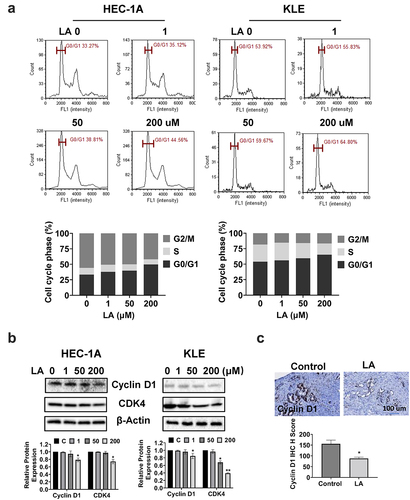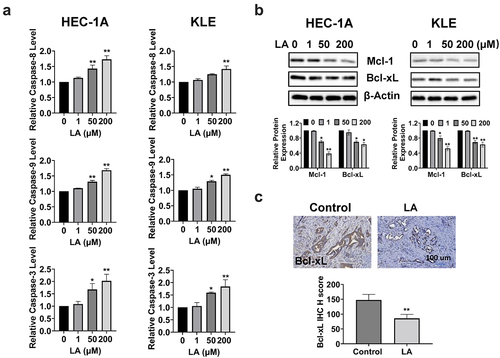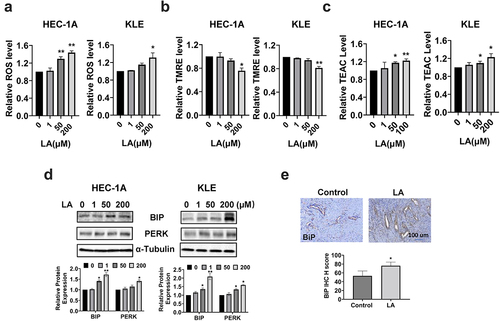Figures & data
Figure 1. LA Inhibited cell proliferation in EC cell lines and tumor growth in a transgenic mouse model.

Figure 2. LA Induced cell cycle G1 arrest.

Figure 3. Effect of LA on apoptosis in EC cells and Lkb1fl/flp53fl/fl mice.

Figure 4. Effect of LA on cellular stress in EC cells and Lkb1fl/flp53fl/fl mice.

Figure 5. LA Inhibited adhesion and invasion.

Data availability statement
All data generated or analyzed during this study are included in this article. The datasets used and/or analyzed during the current study are available from the corresponding authors upon reasonable request.
